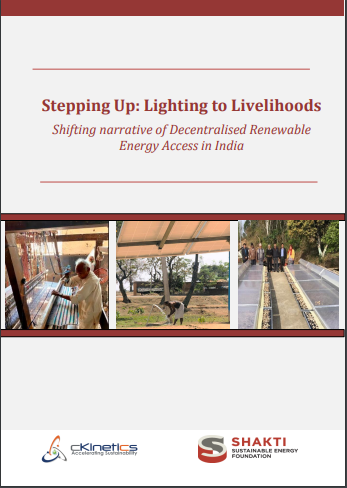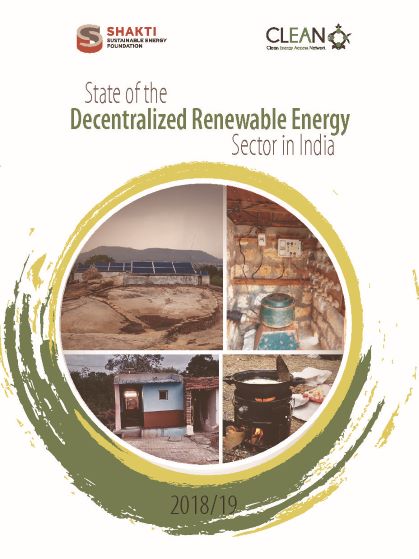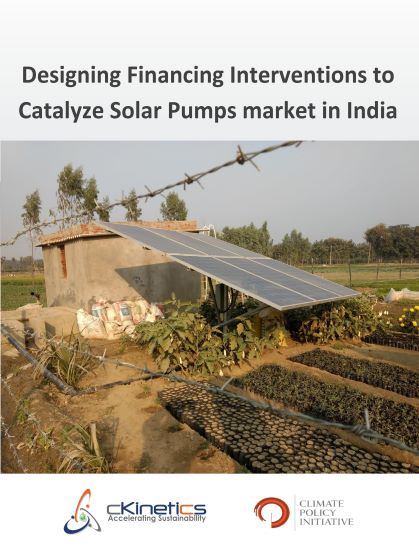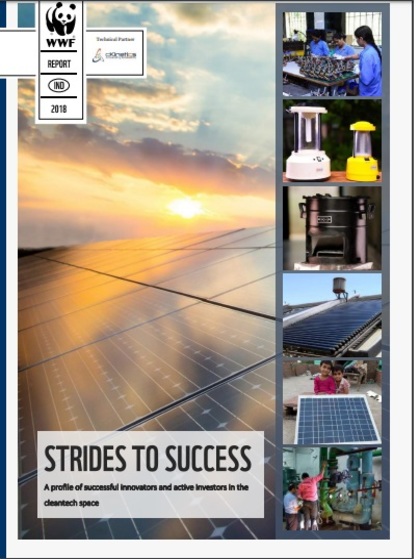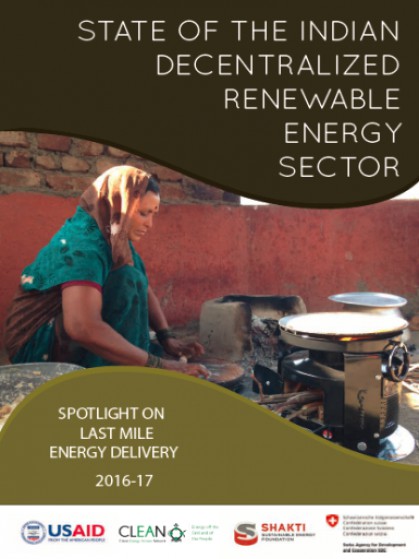A Solar Spin: Improving livelihoods for silk weavers in India through efficient machines
“We intend to create sustainable ‘farm to fabric’ ecosystem for the silk weavers in India”, says Kunal Vaid, Director of ReshamSutra, a renewable energy-based rural livelihood enabling company in India.
1.1 Overview
India is credited to be the second-largest producer of silk with 35,261 MT of raw silk production in 2018-19. However, the country still has to rely on imports of raw silk to meet the domestic demand, estimated around 2785 MT in 2018-19. The government does aspire to reduce the dependence on imported silk and achieve self-sufficiency by 2022 but that requires improving the productivity of the weavers and providing an enabling ecosystem to them. A sector that is renowned for the exclusive quality of product still to some extent relies on inefficient methods such as thigh silk reeling. The manual work required for reeling yarn not only accentuates the drudgery of the weavers but also is a slow process, limiting productivity. It was to address these issues that Resham Sutra stepped into this segment to design, manufacture and distribute a range of machines to support the productive requirements and livelihoods of the weavers, while significantly reducing the physical efforts required in the process. The company, in collaboration with India’s Central Silk Board, has developed solar-powered spinning, reeling and weaving machines for silk yarn production.
On the choice of machinery and technology, Kunal shares that, “Previously there was no useful machinery to support the tasks undertaken by the weavers. Even when machineries were used, the technology wasn’t evolved enough and thus very inefficient. Further, the areas where these weavers are located are remote with many in the tribal areas in states such as Jharkhand, North-east states, etc., which are energy deficient areas. Thus, we approached the issue from a technology-agnostic viewpoint and powering machineries through solar seemed to be the feasible solution in these areas.”
While energy access is important for consumptive purposes by households, it becomes all the more critical when powering productive loads since it is directly linked with the livelihood of the workers. “When people become used to machinery, the dependence on electricity also increases. In these areas, even a break-down of 2-3 hours during daytime affects the productivity of the weavers”, he adds. Therefore, the intent was not only to provide efficient machineries to the workers, but to also reduce the downtime due to lack of electricity as much as possible.
Figure 1: Women weavers using the buniyaad and handloom machine
1.2 Business Model
Given that the targeted consumers mostly belong to the bottom of the pyramid (BoP) segment, Resham Sutra typically ties up with partners who can provide on-ground outreach support (NGOs and social enterprises such as Astitva Mahila Samiti) and funding or linkages with the banks (through partners such as SELCO foundation). This support from the local groups and NGOs is critical during the first stage in spreading awareness for the adoption of these machines as well as organising demonstration and training events in different clusters.
The capital cost of the product varies from INR 10,000 for a silk reeling machine (that is typically used by a single woman weaver working part-time from her household) to INR 150,000 for a solar-powered loom (that is typically deployed in a workshed). The life of most of the machines is at least 10 years and the enterprise has also been creating an ecosystem of local entrepreneurs who operate as service providers for repair and maintenance of the machineries (whenever needed).
On the support from the government for this sector, Kunal highlights that there are incentives in the form of subsidy for looms and machinery, skill up-gradation training and marketing platforms for handloom organisations and weavers to sell the products to the consumers. He does note that despite these initiatives, a key barrier in accessing the financial support from government is the delay in subsidy disbursal which can range from several months to even past a year. Moreover, the implementation of the schemes is not necessarily consistent across geographies i.e. in certain cases, the end-user loan maybe get approved quickly but a similar loan proposal may not be considered in other areas. Thus, on the financing front, instead of relying on one source, the enterprise has been able to ensure provision of end-user financing from multiple sources which includes loans from government under MUDRA scheme, grants from Ministry of Textiles, tie-ups with MFIs such as Samunnati or partnering with organisations such as SELCO foundation. While the cost of the system is high for the targeted user, the payback typically ranges from 6 months to 1 year on account of an increase in productivity.
1.3 Market Potential and impact
After agriculture, most of the rural population in India is engaged in the handloom sector. As per the handloom census 2019-20, there are 2.67 million weavers in India, of which 0.44 million are engaged in the production of silk (Tassar, silk, Muga, and Mulberry). Out of these 0.44 million, 78% i.e. nearly 0.35 million weavers are located in rural areas. With a significant market to tap (~INR 10 billion), Resham Sutra is steadily expanding its base in East and North-east India. Within four years of operation, the enterprise has been able to deploy more than 11,000 appliances across the country majorly in the North-east region (including Sikkim), Jharkhand, Bihar, Odisha, and Chhattisgarh, etc. The heatmap below highlights the states with a high number of silk weaver households in India and also indicates the main operating geographies of Resham Sutra. As can be observed, Assam alone constitutes 33 percent of the total weaver households in India.
Figure 2: Major hubs of weaver households in India and Resham Sutra's operating areas
With the adoption of these appliances, the income of the weavers has been observed to increase from INR 3000 per month to INR 6000 per month.
Source: ReshamSutra
1.4 Way forward
Kunal is cognizant of the fact that product is only a part of the puzzle when addressing the requirements of a segment which is largely unorganised. In order to improve the livelihoods of the workers, a key factor required to sustain improvements in productivity is the complimentary service. “We need to provide more than a technology to the customers”, he adds. Therefore, going forward too, the company also intends to place an equivalent emphasis on the provision of business support (accounting, basic marketing, etc.) to the workers to create a sustainable ‘farm to fabric’ ecosystem for them and plans to reach 10,000 weavers in the next 2 years for the same. Further, the company plans to expand to west and southern states and certain northern states as well in the coming years.
With the vision in place, Vaid re-iterates the importance of partnerships with multiple stakeholders in different domains to be able to reach the desired scale. “Given the limited resources the enterprises in this segment operate with, it important that different stakeholders collaborate together to cater to this segment”, he says. Thus, for scaling up, it is imperative that partners with different skill-sets such as financing, marketing, local bodies come together to create a robust ecosystem for the livelihood of these weavers.
